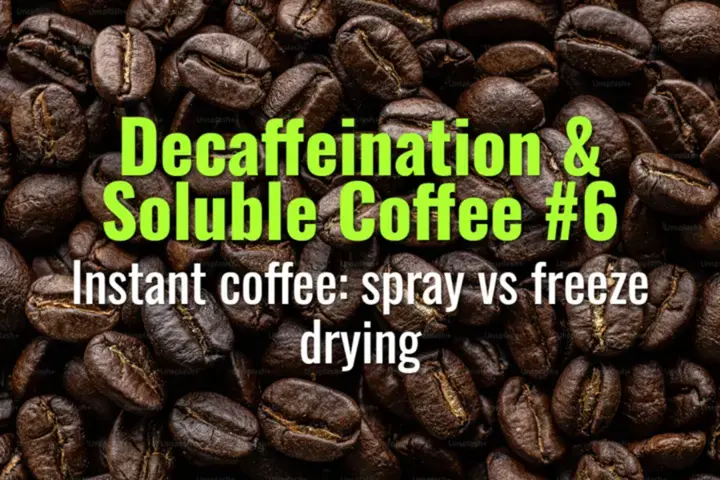Instant coffee: spray vs freeze drying
The two main industrial methods for producing instant coffee—spray drying and freeze drying—and how they differ in process, cost, and flavor preservation.
- Coffee Basics Nerds
- 1 min read
Article 6 of 12 in Decaffeination & Soluble Coffee/

Background
Instant coffee is made by brewing large volumes of concentrated coffee extract, then removing water to form a soluble powder or granules.
Spray Drying
- Process:
- Coffee extract sprayed into a stream of hot air (~200 °C).
- Droplets dry almost instantly, forming fine powder.
- Advantages:
- Fast and cost-effective.
- Produces light, fine powder that dissolves quickly.
- Drawbacks:
- High heat can damage volatile aromatics.
- Often results in flatter, less complex flavor.
Freeze Drying
- Process:
- Coffee extract frozen into slabs or beads.
- Placed in a vacuum chamber.
- Ice sublimates (solid → vapor) at low temp, leaving dried coffee solids.
- Advantages:
- Better preservation of aroma and flavor compounds.
- Produces larger, more attractive granules.
- Drawbacks:
- Slower and more expensive.
- Requires specialized equipment.
Flavor & Market Impact
- Spray-Dried: Common in mass-market, budget instant coffee. Lighter flavor, less aromatic.
- Freeze-Dried: Preferred for premium instant and specialty instant coffee. Fuller aroma, closer to fresh-brewed quality.
Consumer Perspective
- Freeze-dried granules are visually chunkier, seen as higher quality.
- Spray-dried powders may appear fine and dusty, associated with lower-end products.
Summary
Spray drying is economical but sacrifices some flavor complexity, while freeze drying preserves aromatics and quality at higher cost. Modern specialty instant coffees typically use freeze drying to deliver a closer-to-fresh cup experience.